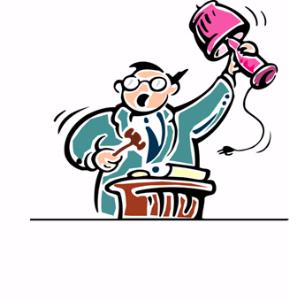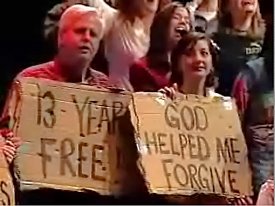
I went to an auction recently. It was a household auction, with lots of furniture, pots and pans, and tons of miscellaneous stuff. I spent $20.50, and came home with an iron that cost $70 brand new, an antique floor lamp that an experienced dealer said he could sell for $50, and a box of “junk” that contained copies of Look and Saturday Evening Post magazines from the early 1960’s. I think I did quite well.
There is an undercurrent of sadness at most "household" auctions. The surviving family watches as the bits and pieces of their childhood are sold to the highest bidders. Maybe they remember eating from a certain dish, or sleeping in an old bed, or how the nick in the antique dining table got there. There are usually some teary eyes when “mama’s” this or that is going, going, gone.
There are two aspects of an auction that are most striking to me.
The first is watching things that were purchased, sometimes at great price and with money earned through hard work, being carted off by someone who just paid a few cents on the dollar of the original purchase price. More than once I overheard people saying they had bought a box full of goods in order to get one particular item, and that they would sell, give, or throw away the rest of the stuff. Possessions that had once been highly valued were now disposable, sold for “give-away” prices.
The other aspect is the high value placed on certain other items. Some things that had been bought for very little money bring premium prices. Furniture that had been hand-made, or that had been purchased for its practical use is now “collectible”. A piece of glassware that had been bought for a few cents at a five-and-dime fetches a hundred or even a thousand times its original price. The bidding reflects how desirable items that had once been “everyday” have become.
And so it is in life. Some of the things we work hard to achieve and accomplish will, at the end of our days, be revealed as having very little lasting value. Indeed, much of it will be, according to the Scriptures, “burned up” and destroyed! At the same time, “common, ordinary” things we have done will be proven to be priceless in eternity.
Knowing how to tell the difference is the stumper, isn’t it? The Master provided us some clues during His life, including when He said, "I tell you the truth. What you did for even the smallest of these people you did for me. They are my brothers and sisters."
Ultimately, the lasting value of life won’t be determined by possessions, perks, or power. It will be measured by how we have treated the people – anyone we saw who had a need we could help with – that God brought into our world.

